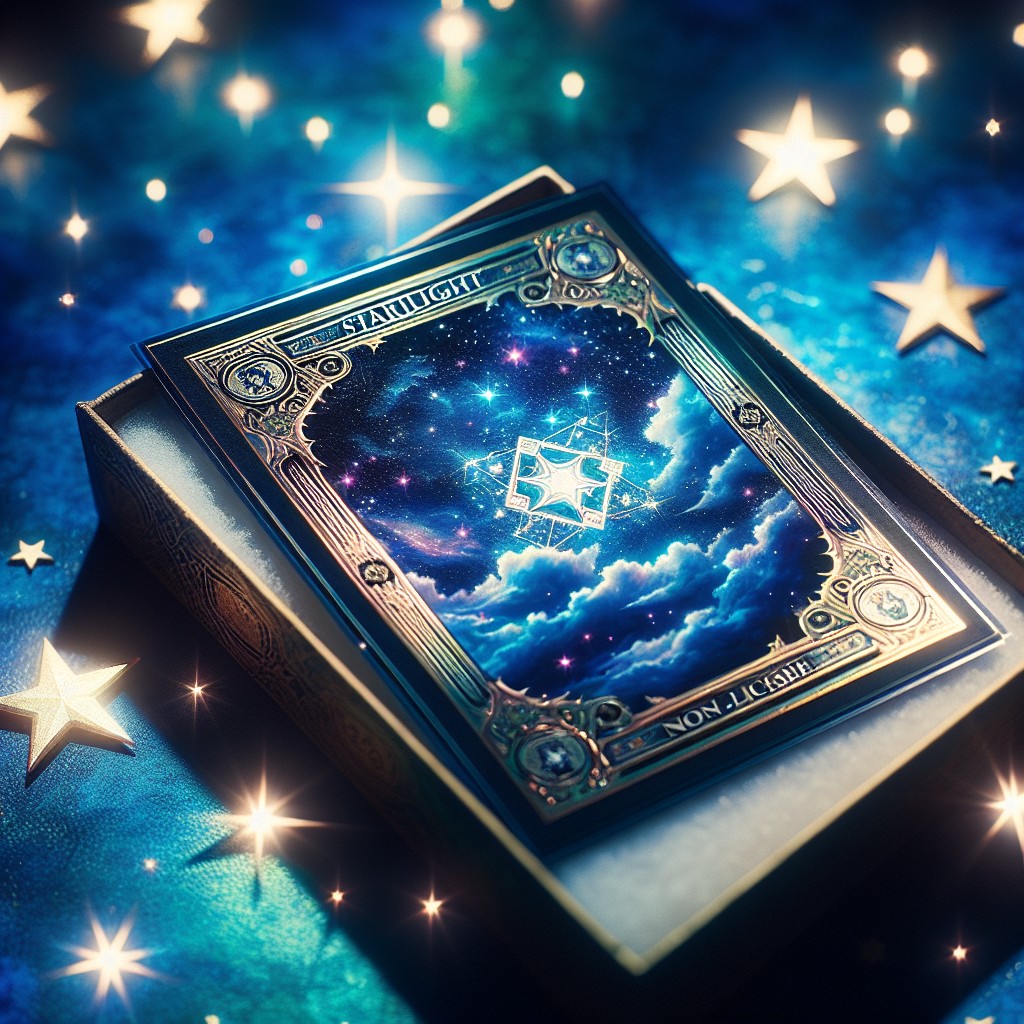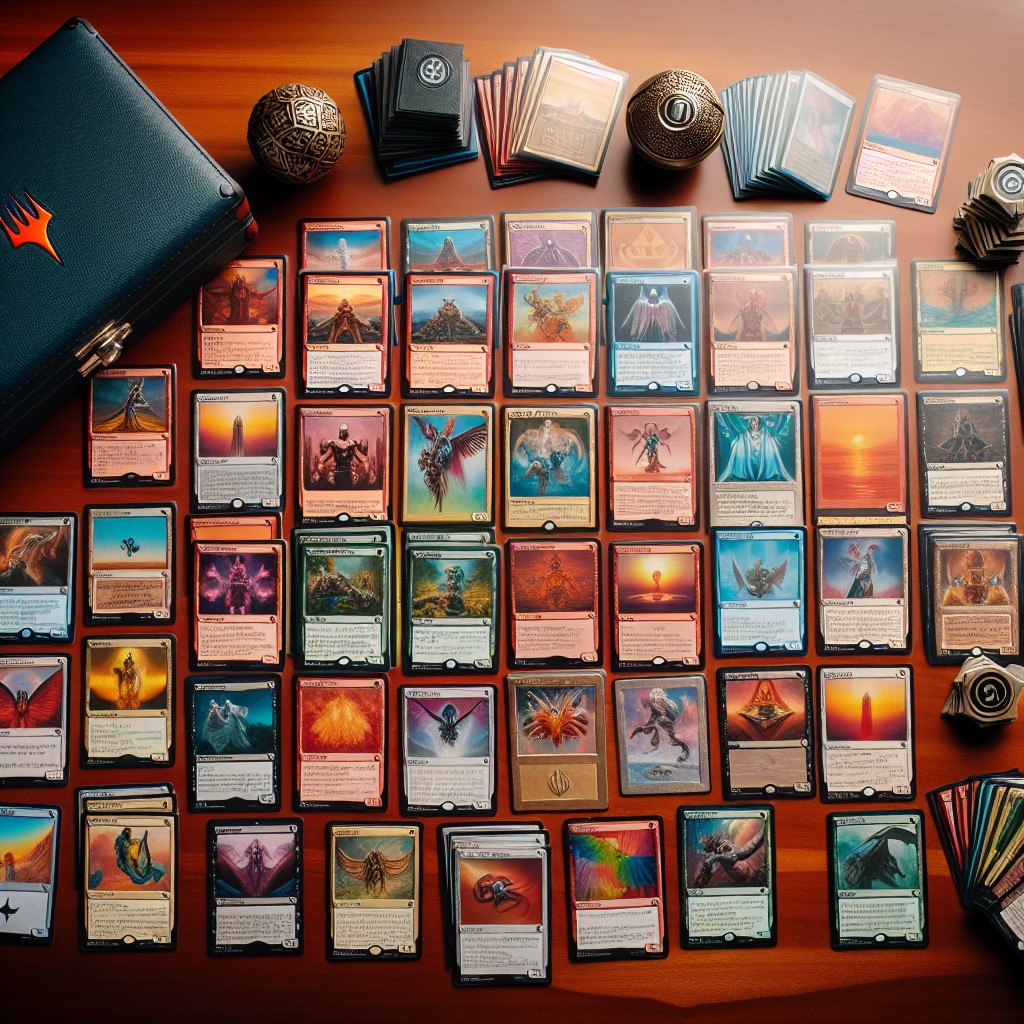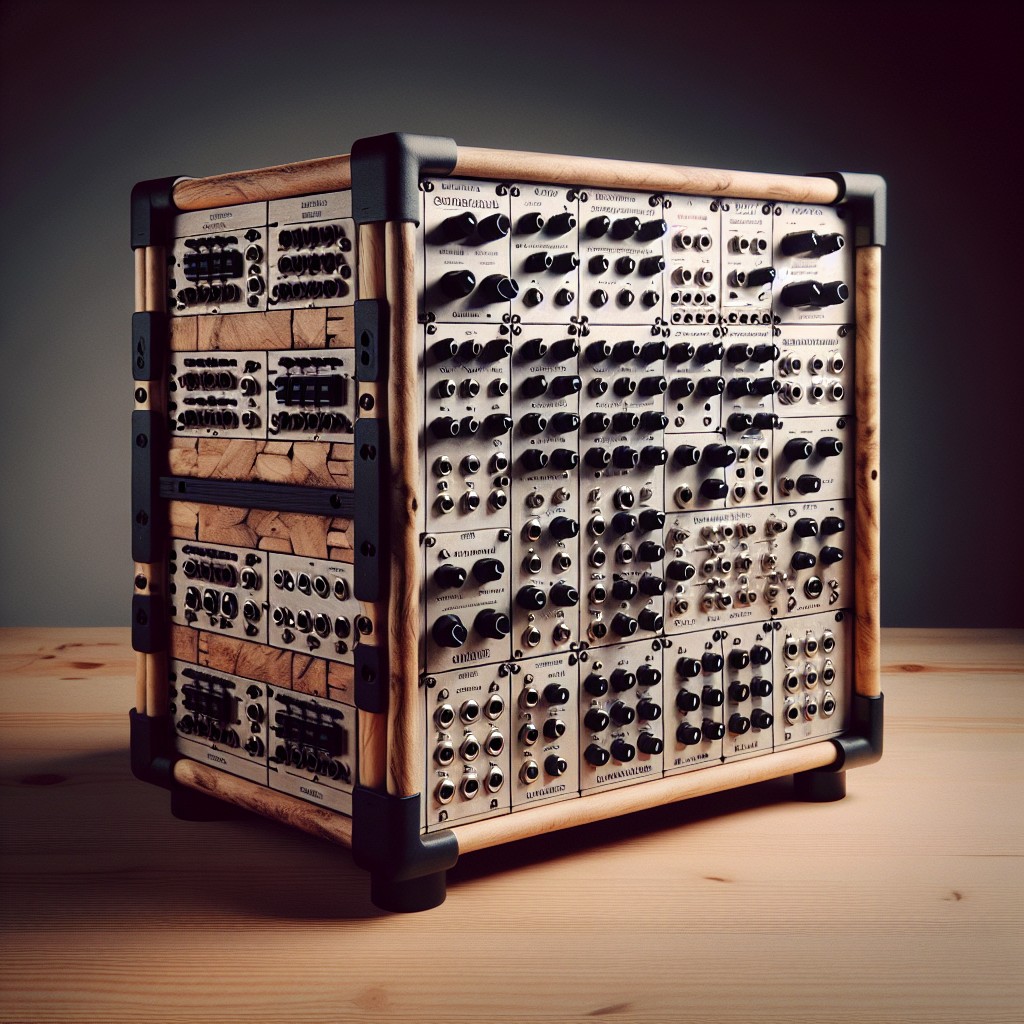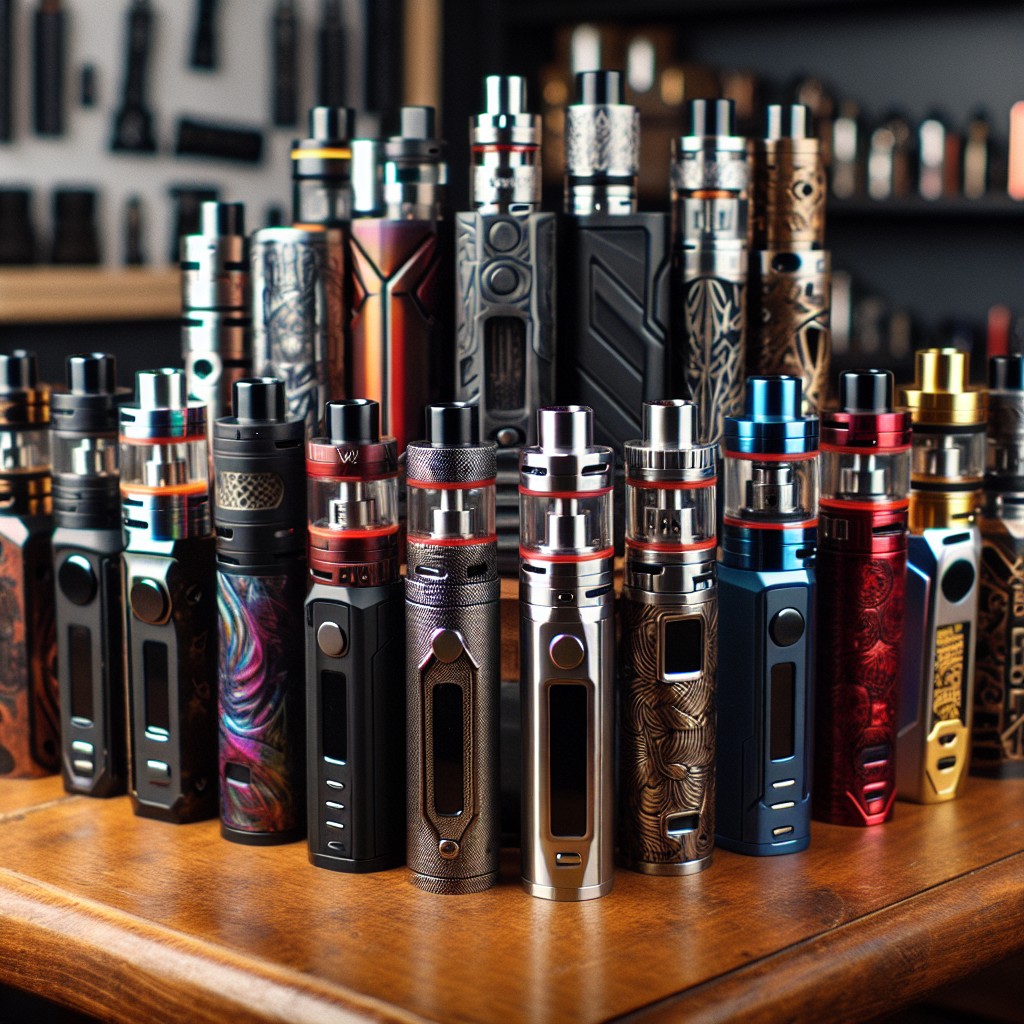Last updated on
Discovering the cheapest aquarium substrate can pave the way for a thriving aquatic life because innovative, budget-friendly options promote healthy water chemistry.
Diving into the aquatic world of your home tank doesn’t mean sinking your budget. Selecting the right substrate lays the foundation for a thriving ecosystem, balancing beauty with functionality, from waste management to plant vitality.
But aquarium aficionados take note – different substrates pair with various fish species and impact water chemistry, including pH levels. Fear not, we’re about to unearth some wallet-friendly substrates like pool filter sand, play sand, and black diamond blasting sand, showcasing how cost-effectiveness and quality can coexist beneath the waters of your aquarium.
Prepare for a deep dive into the economics of the aquatic substrate without compromising the underwater sanctuary you’re curating.
Key takeaways:
- Primary Function: Substrate supports waste breakdown and nutrient cycling.
- Plant Growth: Substrate anchors plants and provides nutrients for growth.
- Compatibility: Consider specific substrate types for different fish species.
- Water Chemistry: Substrates can alter pH and overall water chemistry.
- Popular Cheap Options: Pool filter sand, play sand, black diamond blasting sand.
Understanding Aquarium Substrate
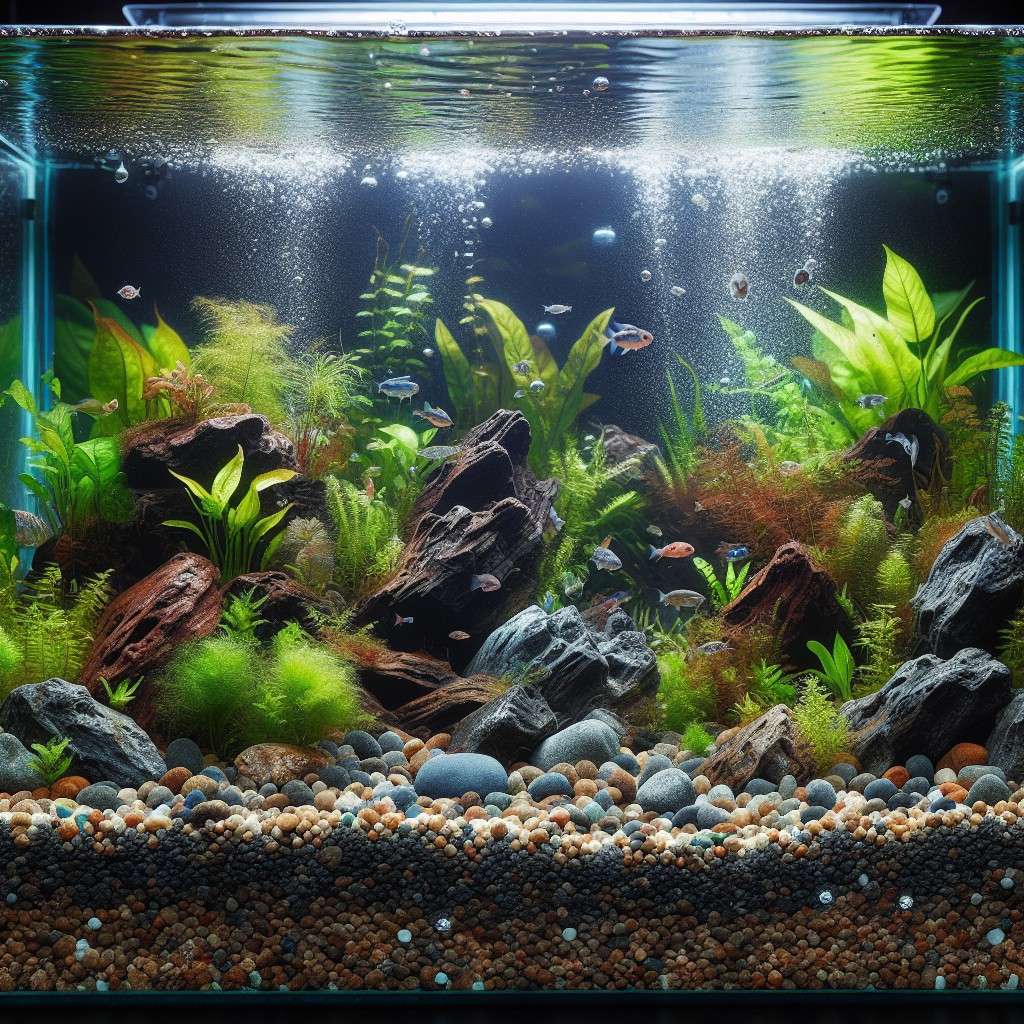
Aquarium substrate forms the bedrock of your aquatic environment, mirroring the natural habitat of your fish and plant life. It’s a foundational element that supports both the aesthetics and functionality of your tank. Here’s what you need to know:
– **Primary Function**: Beyond just looking good, substrate plays a critical role in hosting beneficial bacteria that help in waste breakdown and nutrient cycling. – **Plant Growth**: For planted tanks, substrate serves as soil, anchoring plants and providing essential nutrients for healthy growth. – **Compatibility**: Not all substrates suit every type of aquarium or fish species. Consider if your tank inhabitants require specific substrate types, like soft sand for burrowers. – **Water Chemistry**: Different substrates can alter the pH, hardness, and overall chemistry of your tank water, affecting the well-being of your aquatic pets.In essence, the substrate is more than just decorative gravel; it is integral to sustaining a thriving aquatic environment. Choose wisely to ensure the well-being of your tank’s inhabitants and the longevity of your aquatic ecosystem.
Benefits of Choosing the Right Substrate

Selecting an appropriate substrate can significantly enhance both the functionality and beauty of an aquarium. It creates a foundation that supports the ecosystem within, facilitating beneficial bacterial growth essential for a healthy aquatic environment. This layer aids in the filtration process, breaking down waste and reducing harmful ammonia levels. The right substrate can also influence the behavior and well-being of your aquatic residents. For plants, it can offer vital nutrients and anchor roots, encouraging lush growth. For burrowing or bottom-dwelling creatures, it provides necessary grounds for natural behavior. Moreover, aesthetically, it serves as a backdrop that can make colors pop, bringing your underwater scene to life. With these advantages in mind, it becomes clear that a careful choice in substrate can go a long way in ensuring a thriving aquatic habitat.
Factors Influencing Substrate Choice
When selecting the foundation for your aquatic haven, consider these key elements:
- Tank Inhabitants: Research the natural habitats of your fish and plants. Some species thrive with finer grains, while others need rocky substrates for anchorage or digging.
- Water Chemistry: Certain materials can alter the pH and hardness of your water. Aim for substrates that maintain the balance needed for your aquarium’s ecosystem.
- Maintenance Level: Are you prepared for regular upkeep? Smooth surfaces are easier to clean, whereas coarser substrates require more effort to keep pristine.
- Plant Growth: If live plants are part of your aquascape, look for substrates that support root development and nutrient absorption.
- Filtration System: Ensure compatibility with your filtration setup. Fine substrates, for instance, might get sucked into filters, necessitating a protective mesh or sponge.
Keep these factors at the forefront of your decision-making to cultivate a thriving aquatic environment.
Popular Cheap Substrate Options
Pool filter sand serves as an economical alternative for fish enthusiasts, providing a neutral look with the added benefit of being heavier than play sand, which reduces the likelihood of it being stirred up into the water column.
Play sand, a favorite for budget-conscious aquarists, is another inexpensive option that, while requiring thorough washing to prevent cloudiness, can be quite safe for use in a home aquarium.
Black Diamond Blasting Sand, often favored for its striking black color, offers a visually appealing contrast to bright fish colors and is also a cost-effective choice. However, it’s crucial to verify with the manufacturer that the sand is suitable for aquarium use to avoid harmful additives.
Each option comes with unique considerations regarding grain size and the potential impact on water quality, requiring a balance between desired aesthetics, the ecological requirements of the tank’s inhabitants, and maintenance levels.
Pool Filter Sand
Pool filter sand stands out for its uniform grain size and cleanliness, factors that make it a savvy choice for aquarists on a tight budget. It’s specifically designed to prevent clogging in your filter and provides a picturesque white backdrop that can make your fish and plants pop visually.
To ensure a safe introduction to your aquarium:
- Always rinse the sand thoroughly before use to remove any fine particles or dust, which can cloud your water and stress your aquatic inhabitants.
- Lay the substrate to a depth of about 1-2 inches, keeping in mind that too deep of a layer can harbor harmful bacteria, while too shallow may not allow for secure plant rooting.
- Monitor your water’s pH after installation, as pool filter sand is chemically inert and shouldn’t alter the pH or hardness of your aquarium water.
Economical yet effective, pool filter sand is a go-to for a sleek, classic look without breaking the bank.
Play Sand
Play sand is a wallet-friendly option embraced by many aquarium enthusiasts. Typically used in children’s sandboxes, this substrate is readily available at home improvement stores, often in large quantities for minimal expenditure.
Before introducing play sand into an aquarium, it’s crucial to thoroughly rinse it to remove any dust and fine particles that could cloud the water or clog filters.
Sourcing play sand from reputable brands that guarantee non-toxic products is vital, as certain sands may contain additives harmful to aquatic life. The neutral color palette of play sand can provide a natural look for your tank and can support rooting plants.
When considering particle size, play sand is fine, which can be a double-edged sword. While it’s beneficial for some bottom dwellers that like to burrow, the compact nature of fine sand could lead to dead spots without proper water circulation, potentially affecting the tank’s biological balance.
Despite these points, play sand remains a cost-effective substrate that, with the correct preparation, can create a stunning, healthy environment for a variety of aquatic species.
Black Diamond Blasting Sand (BDBS)
Hailed for its sleek, uniform look, Black Diamond Blasting Sand offers an attractive, cost-effective alternative for aquarists. Primarily composed of coal slag, BDBS’s dark hue provides a striking contrast that makes fish and plants pop in your aquatic tableau.
Its fine granularity ensures a comfortable environment for bottom dwellers and burrowing creatures.
However, the sand’s lightweight nature requires gentle handling during maintenance to prevent clouding. It’s advisable to introduce BDBS gradually, monitoring your tank’s water parameters, as its initial use may slightly alter pH levels.
Pre-rinsing is essential to remove any dust and particles that could otherwise compromise water clarity and quality.
While plant enthusiasts might mix in some nutrient-rich substrates, BDBS can serve as a hospitable base layer for root development.
For those after the combination of aesthetic appeal and affordability, it’s an impressive substrate that doesn’t strain the wallet.
When considering BDBS, always opt for the variety specific to aquarium use to ensure it’s safe for your aquatic friends.
Pros and Cons of BDBS
Black Diamond Blasting Sand (BDBS) can be a wallet-friendly substrate choice that offers a sleek, dark aesthetic for your aquarium. Its composition of coal slag, a byproduct of coal mining, is typically inert, meaning it won’t alter the chemistry of your tank water. This feature can be especially beneficial for those looking to maintain a stable pH level.
Pros:
- Affordable, often significantly less expensive than specialized aquarium substrates.
- The dark color creates a striking contrast with vibrant fish colors and green aquatic plants, making them stand out.
- Grain size is ideal for rooting plants, allowing them to anchor securely.
- Typically free from dyes and chemicals, reducing the risk of contaminating your tank.
Cons:
- Since it’s not specifically designed for aquariums, thorough rinsing is essential to remove fine dust particles that can cloud water.
- Its weight and angular nature may be harsh for bottom-dwelling creatures like some fish and invertebrates.
- May not be suitable for all types of plants; some may require nutrient-rich substrates to thrive.
- The stark color can show debris, algae, and uneaten food more prominently, necessitating regular cleaning.
When considering BDBS, weigh its aesthetic appeal and cost-effectiveness against the needs of your specific tank inhabitants and plants.
Comparing BDBS With Other Substrates
Black Diamond Blasting Sand offers a sleek, dark aesthetic not common among lower-priced substrates. Its color contrasts beautifully with brightly colored fish and plants. Unlike lighter play sand, it doesn’t highlight algae and debris, which can help maintain a cleaner look between maintenance sessions.
In comparison to pool filter sand, BDBS is finer and can compact more, affecting water flow through the substrate. This is a consideration for plants’ root systems and any bottom-dwelling organisms that prefer to dig or sift through the substrate. When choosing between the two, think about your tank inhabitants and their needs.
BDBS’s weighting is beneficial for keeping plants anchored, a potential challenge with lighter substrates like play sand. However, ensure that the edges of the blasting sand are not too sharp for sensitive species, as some may cause harm to creatures like Corydoras catfish that enjoy burrowing.
The pH neutrality of BDBS is a significant advantage, as it generally won’t alter water chemistry, unlike some natural gravel or aragonite substrates that can raise water hardness or pH. This makes it a versatile choice for a wide range of freshwater tanks.
Price-wise, BDBS often comes out as a cost-effective option when bought in bulk, but remember to factor in the initial rinsing and potential ongoing maintenance when comparing overall cost and effort to other substrate choices.
Safe Use of BDBS in Aquatic Environments
Navigating the nuances of incorporating Black Diamond Blasting Sand (BDBS) into an aquarium safely enhances the habitat without undue risk to aquatic life. Primarily consisting of coal slag, BDBS boasts a striking, dark appearance that can make colors pop in your tank, but it’s important to handle it with care due to its abrasive nature.
Here’s how to get it tank-ready:
- Rinsing Rigorously: Before introducing BDBS to your aquarium, thorough rinsing is key. This removes any residual dust and particles that might cloud water or harm fish. A bucket and hose will serve well for this purpose, running water through the sand until it runs clear.
- Checking pH Levels: Although BDBS isn’t known for altering pH levels significantly, a preemptive check ensures your aquatic environment remains stable. Use a pH test kit after the sand settles to verify the water’s parameters.
- Smooth the Edges: Given that BDBS can have sharp edges, opt for species of fish that aren’t bottom dwellers, or consider a gentle smoothing process if necessary. Be mindful of your aquatic residents’ needs to avoid injuries.
- Monitoring Metal Content: While BDBS is typically safe for fish, trace metals may be present. Test your water for metal concentrations occasionally to uphold a healthy environment, especially after the initial introduction of the sand.
By keeping these points in mind, BDBS can be a safe and visually appealing addition to your aquarium that doesn’t break the bank.
How to Rinse and Prepare Cheap Substrates
Starting with unwashed substrates directly in your aquarium can lead to murky water and potential harm to your aquatic life due to the presence of fine dust and particles. To avoid this, a thorough rinse is crucial for any cheap substrate such as pool filter sand or blasting sand.
Here’s how to prepare your budget-friendly substrate before introducing it to your tank:
1. Quantity Check: Before you begin, assess how much substrate you’ll need based on the size of your aquarium.
2. Bucket Rinse: Place a generous portion of the substrate in a bucket. Fill the bucket with water, and use your hands to stir the substrate, loosening any dust and debris.
3. Water Change: Pour out the cloudy water carefully, ensuring the substrate remains in the bucket. Refill with fresh water and repeat the process until the water runs clear.
4. Sieve Option: For an even more thorough cleaning, use a sieve or colander to rinse smaller quantities of the substrate under running water.
5. Final Inspection: Once the water is clear, inspect the substrate for any remaining impurities, large particles, or unwanted debris and remove them.
6. Soak if Necessary: Some substrates may benefit from a soak to release trapped air and reduce initial cloudiness when added to your tank.
7. Adding to the Tank: Moisten the substrate with dechlorinated water before adding it to the aquarium to minimize dust and aid in settling.
By investing a little time in rinsing and preparing your substrate, you’ll ensure a healthy, clear environment for your aquatic inhabitants right from the start.
Long-Term Considerations for Substrate
When selecting an affordable aquarium substrate, ponder its longevity and future impact on the ecosystem. A substrate isn’t just a one-time purchase but an integral part of your tank that can affect the health and growth of plants and fish over time.
- Durability: Some substrates break down or become compacted, reducing water flow and affecting root growth. Research substrates for their lasting power before making your choice.
- pH Stability: Some materials can alter water pH levels. For example, certain sands have buffering capabilities that can raise the pH, perfect for cichlid tanks but potentially problematic for other species.
- Nutrient Content: Consider the nutritional needs of your plants. While inexpensive, inert substrates may not provide the nutrients required for lush plant growth, leading to additional costs for root tabs or liquid fertilizers.
- Maintenance Needs: Fine-grain substrates may need more frequent cleaning to prevent detritus buildup, impacting water quality and fish health. Conversely, larger-grained substrates might trap less waste but could prove challenging for planting.
- Compatibility with Inhabitants: Some substrates can be sharp or rough, unsuitable for bottom-dwelling or burrowing creatures. Soft sand may be a better option for such tank residents.
By thinking ahead, you ensure that cost savings now don’t lead to greater expenses or challenges in the years to come.
Impact of Substrate On Water Parameters
While aesthetics and cost often guide the choice of substrate, considering how it alters water chemistry is crucial. Cheap substrates like play sand can impact water parameters in the following ways:
- pH Levels: Some substrates can either raise or lower the pH of your aquarium water. For instance, crushed coral may increase pH, which might be unsuitable for species that thrive in more acidic environments.
- Buffering Capacity: Certain substrates, such as aragonite sands, have the capacity to stabilize pH levels by buffering the water, thus preventing drastic fluctuations that could stress aquatic life.
- Nutrient Content: A nutrient-rich substrate might be beneficial for planted tanks; however, it can also lead to algal blooms if not balanced with proper tank maintenance.
- Cation Exchange Capacity (CEC): Substrates with high CEC, like laterite, can help in absorbing and releasing nutrients to plants, which is something to consider for a planted aquarium setup.
By being mindful of these impacts, you can ensure your chosen substrate will support the health and well-being of your aquatic ecosystem.
Aesthetics Versus Functionality in Substrate Choice
While it’s tempting to prioritize the visual appeal of a substrate, considering its functional attributes can significantly impact the health and welfare of your aquatic life. Here are key points to keep in mind:
1. Color and Lighting: A dark substrate can make colors of fish and plants pop, but be mindful that darker colors may also affect the behavior of some species who prefer lighter environments.
2. Plant Growth: If live plants are a part of your setup, ensure the substrate contains the necessary nutrients or is capable of anchoring plants effectively.
3. Fish Comfort: Some fish, like certain cichlids or catfish, prefer sandy substrates that mimic their natural habitat and help in breeding.
4. Maintenance Needs: A lighter substrate may show debris more clearly, prompting timely cleaning, while a coarser substrate might trap more waste, affecting water quality over time.
Remember, striking a balance between aesthetics and functionality can lead to a sustainable and beautiful aquarium environment.
Tips for Economical Aquascaping
When fashioning your aquatic oasis on a budget, creativity is your greatest asset. Begin with local resources—rocks and driftwood can often be collected from nearby natural environments, providing a cost-effective way to add structure to your setup. Always ensure these elements are safe and non-toxic for your aquatic life by thoroughly cleaning and, if necessary, sterilizing them before use.
Opt for hardy, low-maintenance plants that multiply easily, such as java ferns or anubias, which not only are affordable but also reduce the need for frequent replacements or elaborate care. Strategic placement of these plants can create a luscious, full look without overcrowding the space.
Consider DIY solutions for decorative items. Repurpose glass jars or ceramic pieces as hideouts or focal points, ensuring they are free of harmful chemicals. Embrace the layered look with your chosen substrate; a thicker layer at the back can create an illusion of depth and dimension, enhancing the visual appeal of your aquarium without additional cost.
Emphasizing resourcefulness and a hands-on approach can lead to a bespoke and budget-friendly aquascape that’s both enchanting and sustainable.
FAQ
What is the best cheap aquarium soil?
The best cheap aquarium soil is gravel, owing to its affordability and range of aesthetic options favored by aquarists, especially those seeking a natural look.
What is a cheap alternative to aquarium gravel?
A budget-friendly alternative to aquarium gravel is pool filter sand, which mimics a natural aesthetic in aquariums and is available in bulk for cheaper prices.
What is the lowest maintenance substrate for aquariums?
The lowest maintenance substrate for aquariums is sand due to its compactness which prevents uneaten food and waste from getting lodged between grains.
How to select budget-friendly substrates for different types of aquariums?
Selecting budget-friendly substrates for different aquarium types can be achieved by researching local pet stores and online vendors to compare prices and quality, disposing of brand preferences and considering options like gravel, sand, and soil.
Can kitchen items serve as safe, cost-effective substrates in aquariums?
Yes, certain kitchen items such as ceramic dishes, glass jars, and stainless-steel utensils can serve as safe, cost-effective substrates in aquariums if properly cleaned and managed.
What are innovative ways to save money on substrate without compromising on the health of the aquatic life?
Innovative ways to save money on substrate include methods like buying in bulk, utilizing ornaments and rocks to minimize the amount required, and opting for affordable substrates such as peat moss or play sand that balance cost and the health of aquatic life.
Recap

